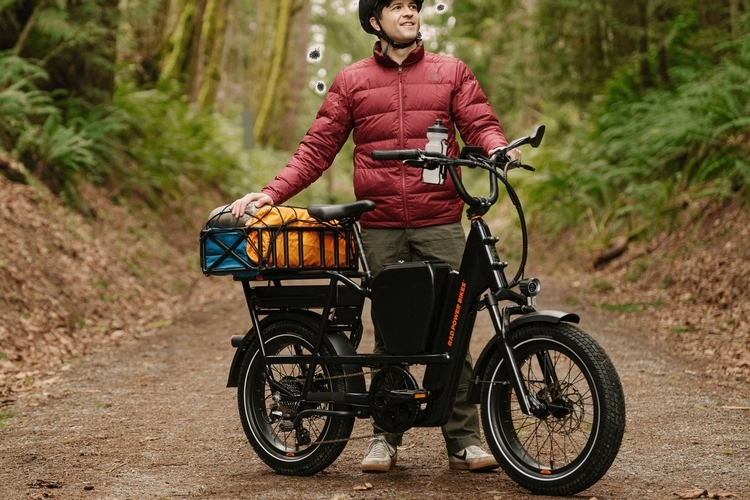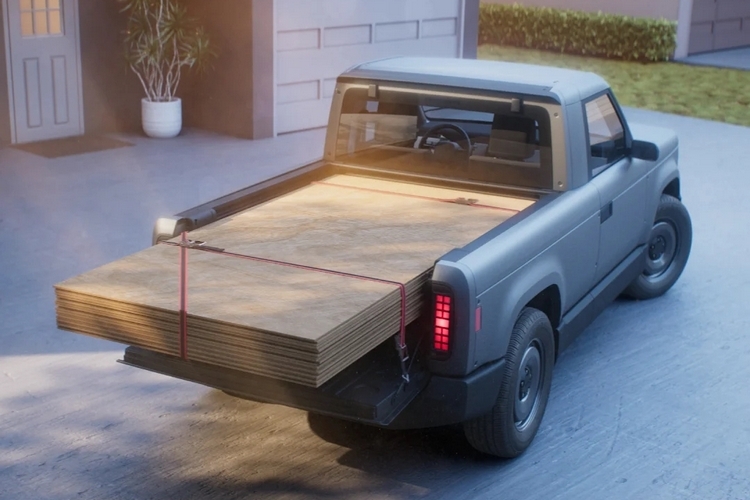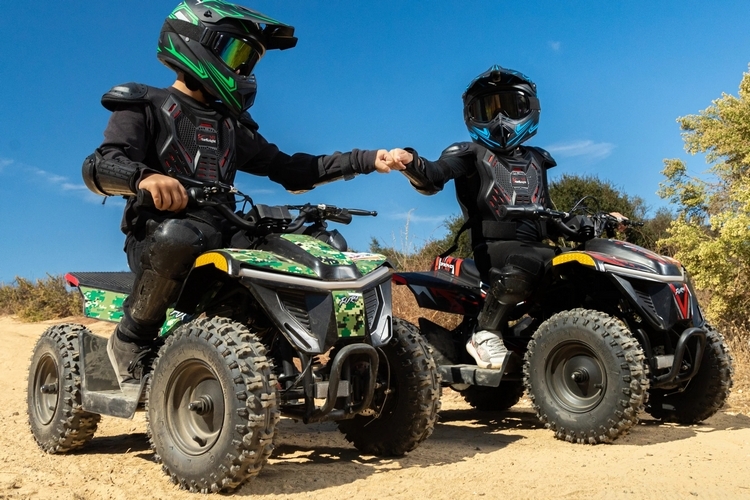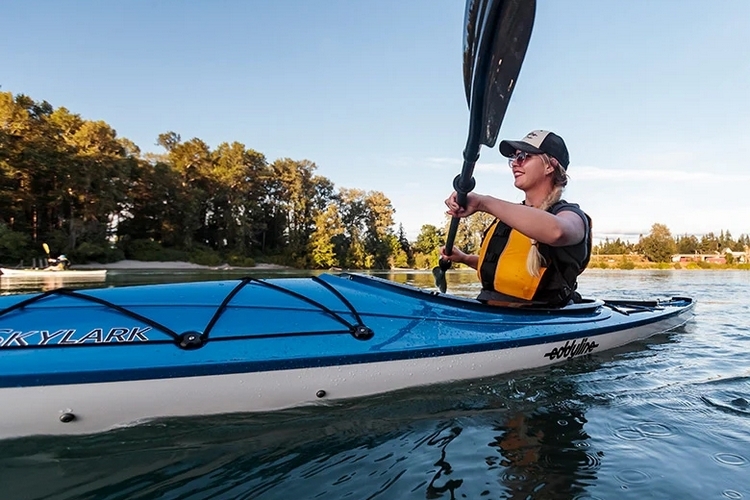
There are many types of kayaks out there, each designed for different activities in the water. Some are built for lakes and ponds, while others are rigged for touring open waters. Some are designed for a relaxed paddling experience, while others are equipped to handle more challenging rapids and whitewater. Some kayaks are optimized for fishing, while some kayaks put a premium on portability.
For beginners, it’s always best to start with recreational kayaks, those easy-to-use variants designed for paddling on flat water. With their wider profiles and more stable designs, these light canoes make paddling quite an easy affair even for absolute novices. They’re also incredibly safe, allowing you to take the waters without much worry, so you can focus on enjoying your time in the water and having a whole lot of fun.
The best recreational kayaks aren’t all the same, either. Some have a cockpit that has you sitting inside the boat, while others sit you right on top of the hull. Some have fixed construction, so they’re a little tougher to transport, while others use collapsible designs that make taking them to the water a more convenient affair.
These are the best recreational kayaks for novice paddlers who want to spend time exploring in the water.
Intex Challenger K1

Pros
- Very affordable
- Stable and tracks decently in calm waters
- Very easy to transport
Cons
- A little hard to get in and out for taller folks
- No drain plug
- Gets pushed around during windy conditions
Length: 9 feet
Width: 30 inches
Weight: 24 pounds
Weight Capacity: 220 pounds
Some people just want a recreational kayak that can get them on the water a few times during the summer. That’s why for many novice paddlers, this economically-priced inflatable kayak is a good enough solution to get that done. It rides low, which keeps it really stable, although it does get pushed around a bit during windy conditions, but the long rudder allows it to track in a really straight line, so it’s fairly easy to maneuver around the water (just don’t take it out on really windy days). The inflatable seat is pretty comfortable, too, although the smaller size of the kayak does make it a bit challenging to get in and out, especially if you’re over 5’10”. Make sure to watch video guides online, by the way, as they can give you a better idea of how to properly inflate it for best results, especially since the kayak, the beam floor, and the seat need to be inflated separately.
Pelican Sentinel 100XP Angler Fishing Kayak

Pros
- Stable and tracks well even in windy conditions
- Plenty of room on top for movement
- Padded area out front perfect for taking the dog with you
Cons
- No paddle included
- Can drift when fishing
Length: 9.5 feet
Width: 30 inches
Weight: 42 pounds
Weight Capacity: 275 pounds
Designed for fishing, this recreational kayak has an open-face design that gives you plenty of room to move around while on the water, which you’ll definitely need if you manage to get aught caught on your line. It has a twin-arched hull that enables a stable ride with reliable tracking, while the sit-on-top design makes it fairly easy to get on and off. There’s a padded area out front that’s great for keeping cargo in place, which also makes the perfect spot for your dog to sit on if you want to take it out for a day on the water. We love the extra details, too, from the molded footrests and the cup holder to the paddle tie downs and 13L of removable storage, It’s got decent weight, too, tipping the scales at under 42 pounds, while supporting weights of up to 275 pounds.
Ocean Kayak Malibu 9.5
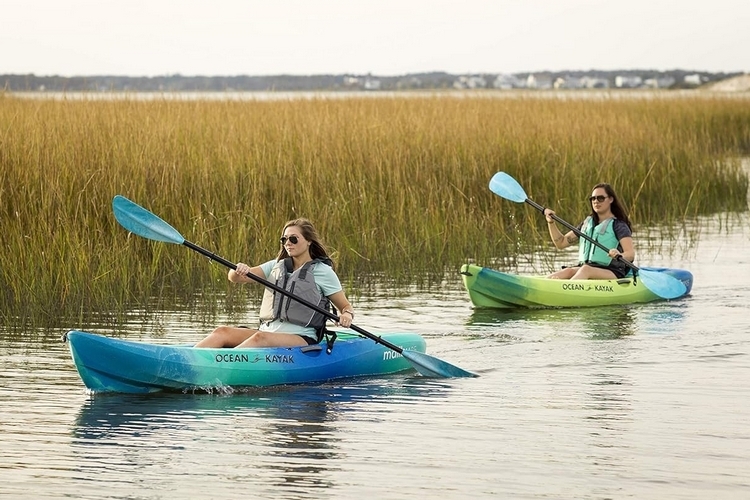
Pros
- Very stable, making it easy to get on and off
- Decent speeds for a recreational kayak
- Large storage wells
Cons
- Seat is too sparse for our liking
- Doesn’t track perfectly
Length: 9.5 feet
Width: 33 inches
Weight: 54 pounds
Weight Capacity: 271 pounds
If you want a recreational kayak that’s absolutely forgiving, few do better than this sit-on-top model, which is so stable in the water, it’s so easy to get on and off. Seriously, you can jump in the middle of the lake and get back on without much trouble. There’s plenty of room on top, too, so you can wiggle around and switch postures without any issues, while tracking decently enough that even novices should be able to get a handle on it in no time. While stability is clearly the priority here, it does offer decent speeds, as well, especially with its more compact 9.5-foot length. There are other nice details, including a handy center storage hatch, molded handles, and storage wells at both the front and rear. It feels durable, too, so this thing should last you through many seasons of paddling.
Perception Tribe 11.5
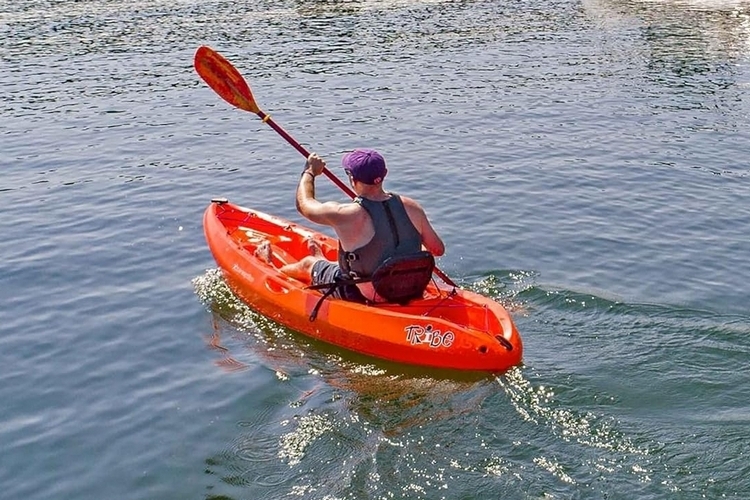
Pros
- Stable enough to handle light waves on open water
- Tracks perfectly straight
- Very comfortable
Cons
- Not very agile
- Not easy to carry
Length: 11.5 feet
Width: 30.5 inches
Weight: 57 pounds
Weight Capacity: 350 pounds
There’s a reason this is the most popular recreational kayak’s in Perception’s lineup – it’s just a comfortable, stable, and reasonably versatile ride. We love the amount of space it offers on the deck, allowing you to stay comfortable for an entire day out on the water. It has an incredibly stable feel even during windy days out in the lake, all while tracking perfectly straight, responding quickly to strokes, and maneuvering decently enough. This is so stable, by the way, you should be able to use this even on beaches with light waves, so conquering all the flat water lakes and ponds should be downright easy work. Other details we like include the framed adjustable seat back, multiple foot rest options, center hatch with built-in bag, and large storage wells on both front and back. It does get pretty heavy and awkward at 52 pounds and 11.5-feet long, so you may want to keep moving it while on land to a minimum.
Wilderness Systems Aspire 105
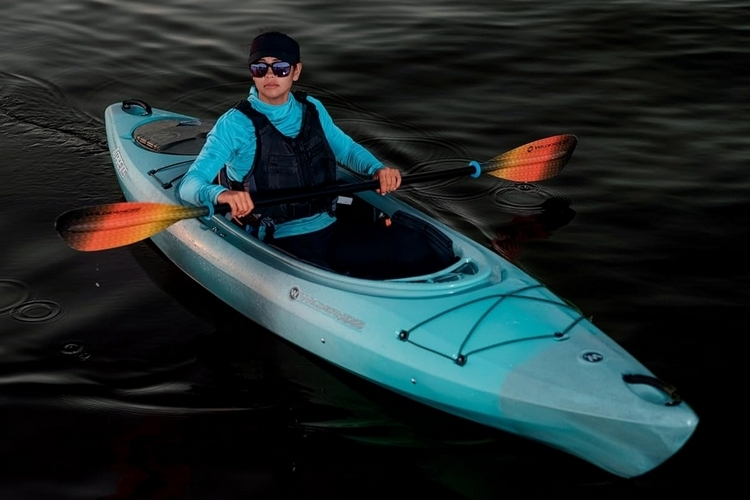
Pros
- Stable on calm and slow-moving water
- Easy to control
- Very comfortable seat
- Accommodates heavier individuals
Cons
- Limited to Class 2 rapids
Length: 10.5 feet
Width: 29 inches
Weight: 48 pounds
Weight Capacity: 400 pounds
If you want a recreational kayak than can handle light river treks as well as it handles lakes and ponds, you may want to look for sit-in models that put you inside an enclosed cockpit. Equipped with a shallow hull, this one’s designed for safe paddling in either calm or slow-moving waters, while the 10.5-foot length keeps it maneuverable enough to let you navigate around any obstacles you might encounter. It has a wide cockpit, so you don’t feel trapped in at any point, with leg paddings and adjustable footrests allowing you to find a really comfortable position inside. Sure, the float isn’t as stable as an open-face kayak at first, but it really does feel much more secure once you’re in the water, since the lower center of gravity and the retractable skeg make it much easier to manage, especially during windy days on the lake or on the slow-moving waters of a local river system. It can also support weights up to 400 pounds, so you can load a good amount of cargo on the rear storage hatch.
Kokopelli Platte Inflatable Kayak
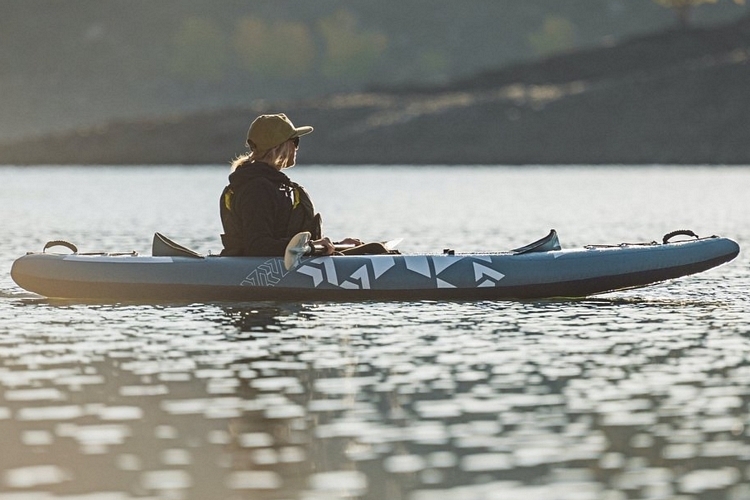
Pros
- Easy to transport
- Good stability and decent tracking with the fins attached
- Much tougher than your typical inflatable
Cons
- Low rails does leave it susceptible to splashes
- Not a lot of cargo room
Length: 10.25 feet
Width: 34 inches
Weight: 37.5 pounds
Weight Capacity: 330 pounds
Inflatable kayaks offer a massive leg up in convenience over their traditional counterparts. However, their inflatable nature tend to leave them less than ideal for use over the long haul. Not the case with this model, which boasts a tough 1000D PVC construction that you can beach up and down your local waters without any worries of damaging anything. Seriously, this is one of the few inflatables we’ve used where you didn’t have to be extra careful about how and where you’re riding it. You just go about your day and have fun, knowing full well it will hold up to what the waters have to offer.
It uses an inflatable drop-stitch floor that gives it the rigidity it needs to provide stability in the water, especially with the equally rigid pontoons on either side. Two removable fins, nine inches and five inches respectively, allow you to adjust the tracking depending on prevailing conditions, making it significantly easier to control the boat’s movements even on windier days. It’s comfortable enough, albeit not as much as the traditional designs in the list, but it definitely makes up for that with the packable convenience and the lack of need for kayak storage racks at home.
No products found.
Oru Kayak Inlet
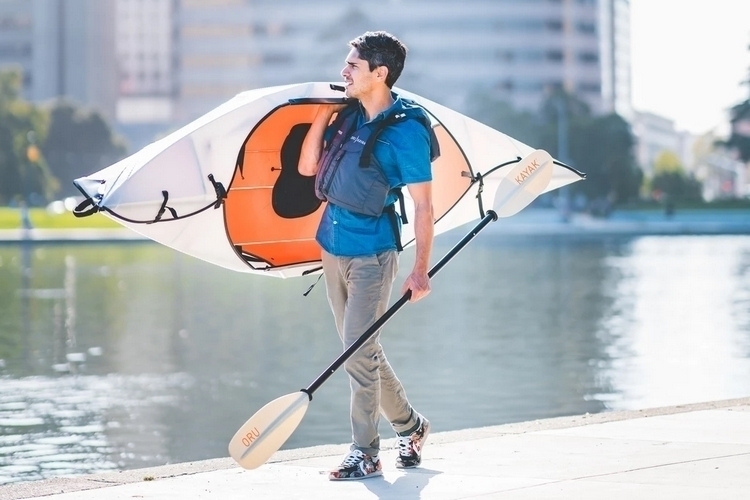
Pros
- Easy to transport
- Assembles quickly
- Stable enough on calm waters
- Surprisingly durable
Cons
- Tracking takes effort
- Not very comfortable
Length: 9.7 feet
Width: 31 inches
Weight: 20 pounds
Weight Capacity: 275 pounds
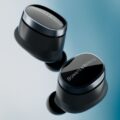
An equally packable alternative to inflatables, this recreational kayak folds into the proportions of a large briefcase, making it incredibly to take to the water. Because you simply unfold and attach parts, set up goes a lot faster and easier than inflatables, without the risk of putting in too little or too much pressure. Basically, it’s even more convenient.
Measuring just under 10 feet long and 30 inches wide, the kayak offers excellent stability on flat water, so you can confidently paddle and maneuver without worries of tipping over. It’s also nimble, with a feel that’s just way more agile than comparable inflatables, although it’s far from the most comfortable kayak you’ll sit in, which, we guess, is the tradeoff for the convenient folding design.
Eddyline Skylark
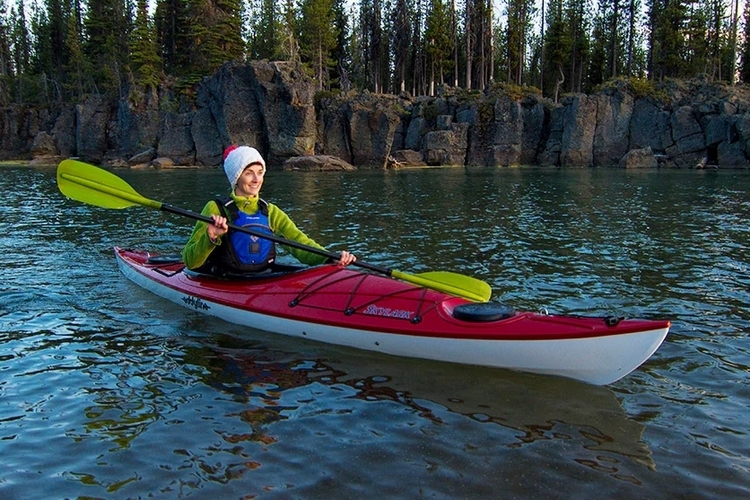
Pros
- Stable enough to handle slow-moving rivers
- Tracks straight even in windy conditions
- Very nimble
- Lightweight at just 41 pounds
Cons
- No drain plug
- Expensive
Length: 9 feet
Width: 30 inches
Weight: 24 pounds
Weight Capacity: 220 pounds
We love the lightweight construction of this sit-in recreational kayak, which tips the scales at just 41 pounds, while delivering excellent toughness and composite-like good looks. Despite its lighter build, it’s incredibly stable, steadily navigating not just lakes and other flat waters, but also slow-moving rivers. It’s also very easy to maneuver, allowing you to get out of the way of obstacles in short order, while the reliable tracking lets you stay on path without having to do much adjustments. Suffice to say, this probably offers the best paddling experience out of all the boats in this list with its standout performance in stability, glide, and tracking. Despite being lightweight, this isn’t sparse in features, offering robust foot braces, retractable carry handles, a round hatch for storage, and even recessed fitting on the deck, so your clothes don’t snag anywhere at any point.
Hobie Mirage Passport 10.5 R
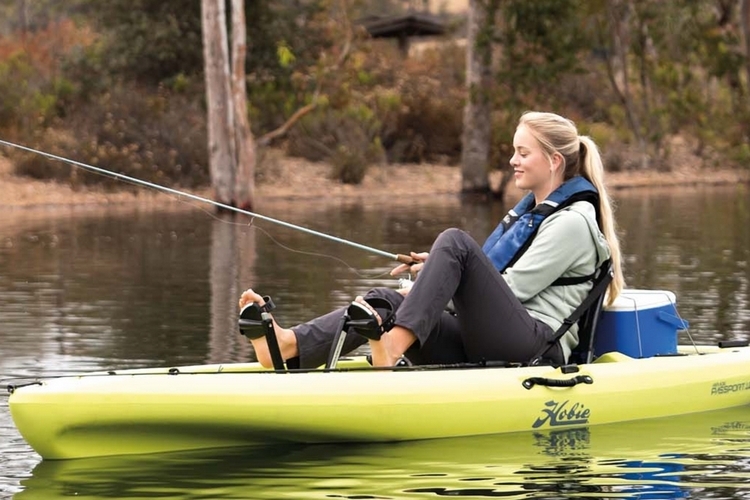
Pros
- Stable enough to let you stand when casting a line
- Excellent pedal drive system allows superb tracking and maneuverability
- Very comfortable seat
Cons
- Very heavy because of all the extra components
Length: 10.4 feet
Width: 34 inches
Weight: 75 pounds
Weight Capacity: 325 pounds
Don’t like paddling? Not a problem, since there are pedal-based recreational kayaks that let you use your feet to get around instead. This model from Hobie is one of the best in that category, offering excellent comfort and stability in the water while relying on the outfit’s MirageDrive pedal system to maneuver and propel it forwards. It’s also one of the most affordable pedal drive kayaks, all while delivering performance on par with more expensive options.
This is a fishing kayak, by the way, with two built-in rod holders, a stackable hull, and mounting tracks for accessories (you can bring a paddle if you want), making this a really versatile recreational boat option. It’s so stable, in fact, you can stand on the hull while fishing, all while allowing excellent maneuverability with its clever pedal drive design. Do note, this kayak is heavy, especially with the extra drive components integrated into it, so loading it onto your car roof can definitely make for a frustrating challenge.
